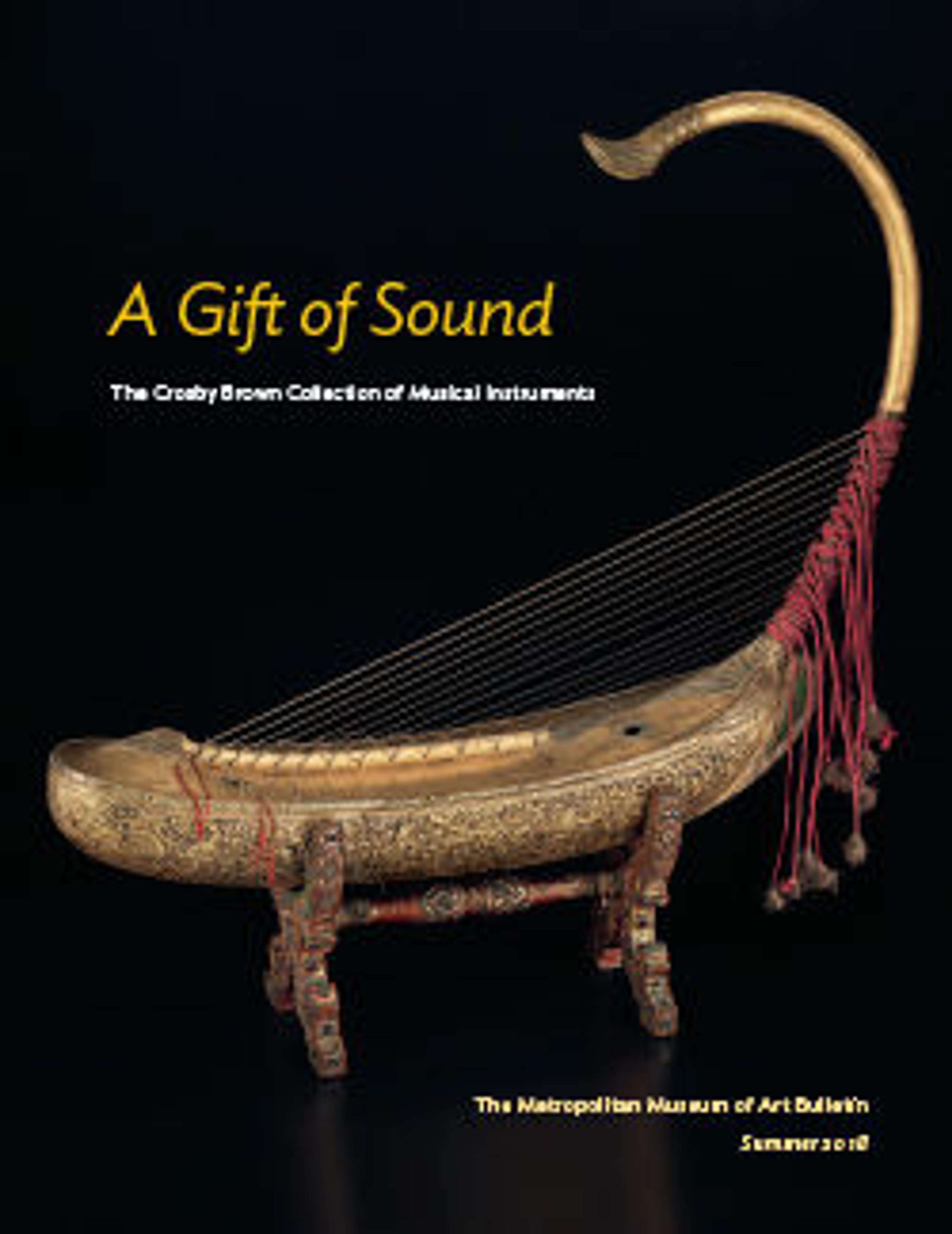Suzu
The term suzu refers to two Japanese instruments associated with Shinto ritual: (1) a single large crotal bell similar in shape to a sleigh bell and having a slit on one side; and (2) a handheld bell-tree with small crotal bells strung in three levels on a spiraling wire. The larger form may be hung from a rafter in front of a Shinto shrine and sounded by a robe or ribbons that hang within reach of the worshipper. The smaller suzu seen here is supported atop a handle and is held by female shrine attendants (miko) costumed in traditional robes, white-powdered faces, and wearing Heian-period coiffure during performances of kagura dance. Kagura (music for the gods) is a term encompassing Shinto instrumental music, songs, and dances performed at shrines and at court. It was formalized as early as 773, when it appeared in the palace repertoire. These small bells, ritual implements of great antiquity, may also be grouped together in bundles for folk and ceremonial performances.
The Museum's rare seventeenth-century suzu contains twelve barrel-shaped crotal bells whose slits terminate at its ends with a heart-shaped cutout. A five-lobed metal hand guard with flower motifs and openwork hearts bears a hidden inscription on its underside. It reveals the history and use of the instrument, stating that this Shinto instrument was used by priestess Kuriyama Kamiko for the worship of the Miwa Miyojin deity at Miwa, a town in Soe County, Nara Prefecture. It also bears a date of 1699.
The Museum's rare seventeenth-century suzu contains twelve barrel-shaped crotal bells whose slits terminate at its ends with a heart-shaped cutout. A five-lobed metal hand guard with flower motifs and openwork hearts bears a hidden inscription on its underside. It reveals the history and use of the instrument, stating that this Shinto instrument was used by priestess Kuriyama Kamiko for the worship of the Miwa Miyojin deity at Miwa, a town in Soe County, Nara Prefecture. It also bears a date of 1699.
Artwork Details
- Title: Suzu
- Date: 17th century
- Geography: Miwa, Nara Prefecture, Japan
- Culture: Japanese
- Medium: Wood, metal
- Dimensions: H. 13 1/2 × Diam. 7 1/2 in. (34.3 × 19 cm)
- Classification: Idiophone-Shaken-crotal bell
- Credit Line: The Crosby Brown Collection of Musical Instruments, 1889
- Object Number: 89.4.94
- Curatorial Department: Musical Instruments
More Artwork
Research Resources
The Met provides unparalleled resources for research and welcomes an international community of students and scholars. The Met's Open Access API is where creators and researchers can connect to the The Met collection. Open Access data and public domain images are available for unrestricted commercial and noncommercial use without permission or fee.
To request images under copyright and other restrictions, please use this Image Request form.
Feedback
We continue to research and examine historical and cultural context for objects in The Met collection. If you have comments or questions about this object record, please complete and submit this form. The Museum looks forward to receiving your comments.
